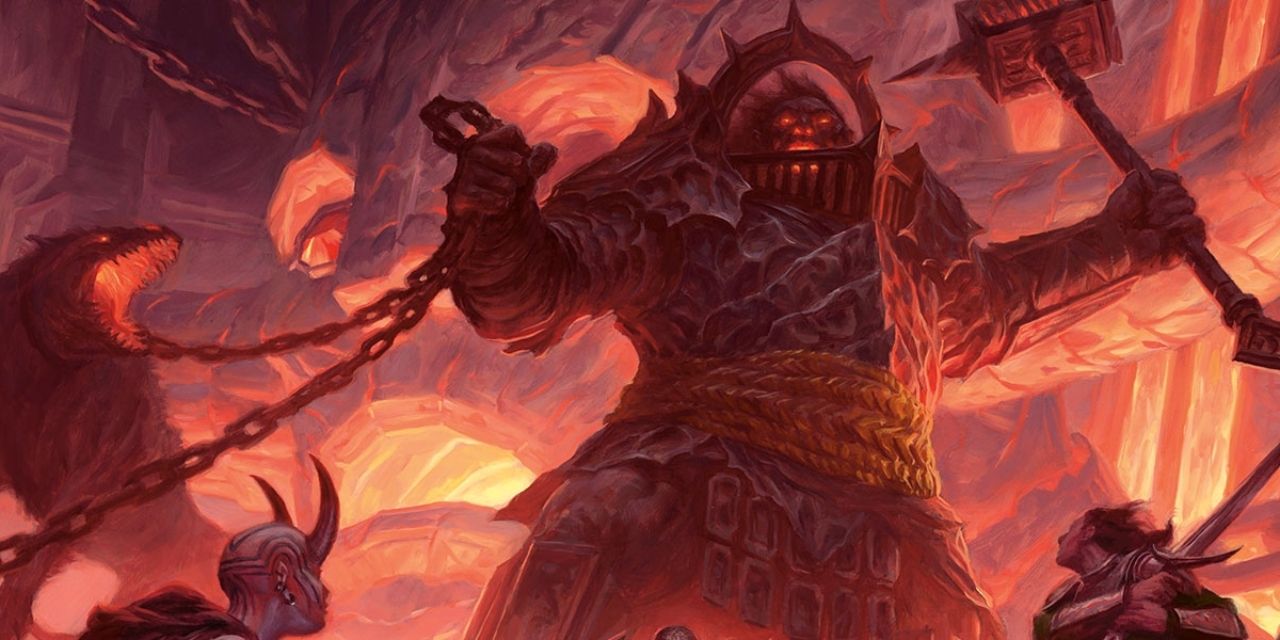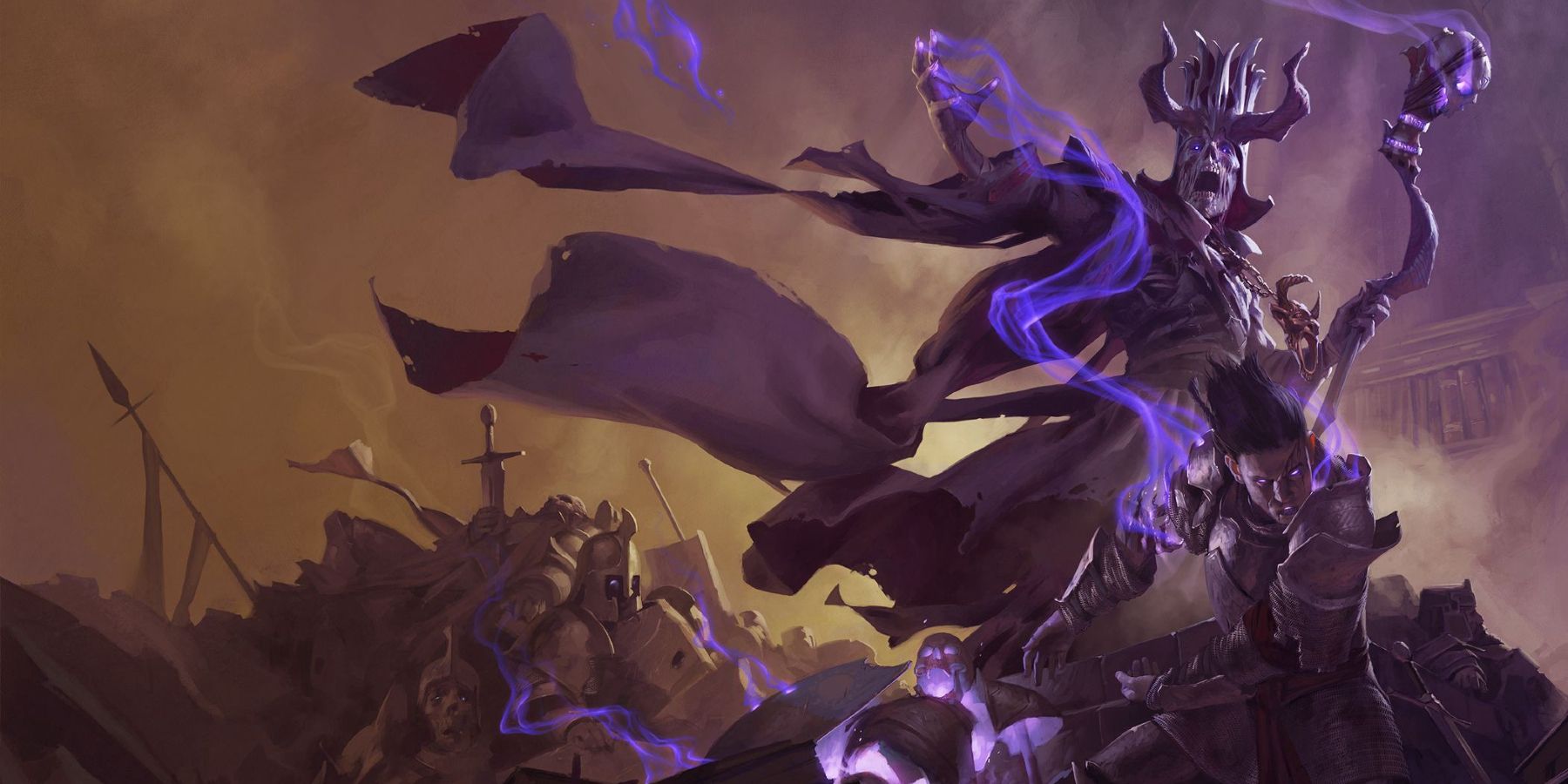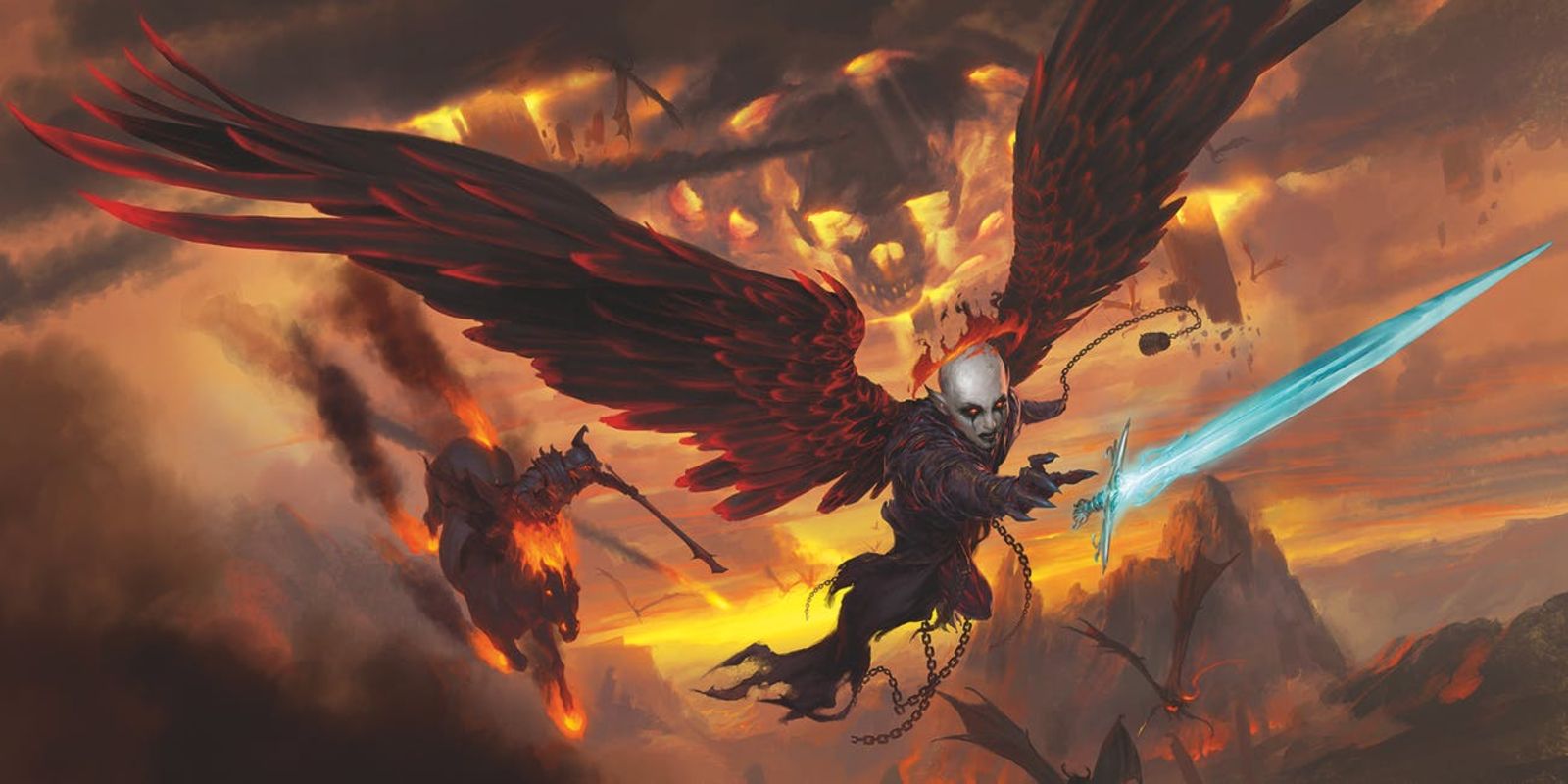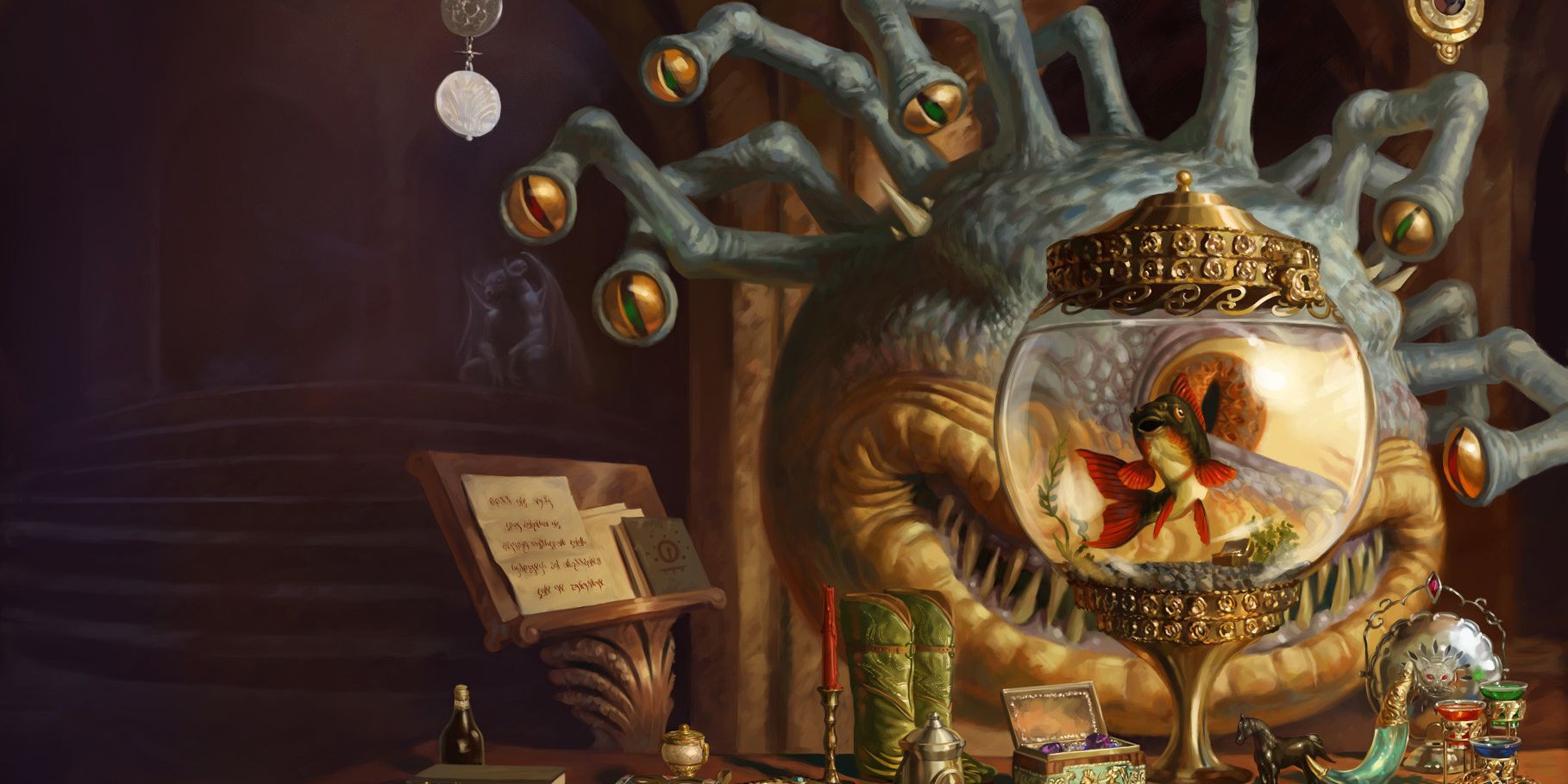For Dungeon Masters, creating a big bad evil guy or girl for their Dungeons & Dragons campaign might seem like a daunting task. At first glance, it can be hard to see through the math and design involved with homebrewing villains, but in reality it's knowing the baddie's motivations and how they fit into the campaign's narrative that's important. Memorable villains are much more than a stat block, so let's break down what really makes one great and examine some different villainous archetypes to use in campaigns.
Above all, the villain of any campaign needs goals and objectives, and these must eventually bring the villain into conflict with the player characters. The goals don't need to be complex or public information, and they don't need to make sense to outsiders (at least not at first), but there should be some overarching deed they need to accomplish or state of being they want to attain. For example, the goblin gangster Krenko wants to become rich, and he's going to do so by robbing and extorting his way through every business in town, including the ones protected by the players. This sets up Krenko and the player characters on opposite ends, with a confrontation becoming inevitable.
One of the easiest ways to make a villain more memorable is to make their motivation personal. For cases like this, revenge, family ties or broken relationships all make great motivations, and DMs should scour the PC's backstories for inspiration. Did the rogue get an old partner arrested? That's a premade nemesis. Perhaps a paladin's mentor turned out to evil, but he still taught her everything she knows about hunting down villains, making the mentor more than capable of being a thorn in her side now that she's hunting him. If there isn't a bevy of options for villains already written in the backstories, then it is advisable for DMs to keep some of their early enemies alive for later. A simple bandit leader or goblin boss could become a more serious threat once they are motivated by vengeance or their goals are specifically designed to hurt the PCs.
No matter what scale the game is on, great villains need to have enough power to start changing the world around them. This is the threat they represent in the immediate tense. Characters like Tiamat and Acererak are powerful monsters with significant personal abilities that could cause catastrophe wherever they choose to direct their efforts. Krenko might only be a goblin gang boss, but to the extorted denizens of Tin Street, he might as well be as deadly as an archlich or dragon goddess. The stakes don't need to be world-shattering for them to be emotionally compelling or for a villain to have reach.
Great villains also tend to stand out. This is easiest for a DM to achieve with a distinct physical characteristic, such as Voldemort's snake-like face or Darth Vader's ominous breathing -- the point being to make the villain theatrically memorable and probably a little creepy or uncanny. Distinctiveness can also come into play in non-physical ways with the villain's personality traits and flaws. Especially if the villain doesn't interact directly with the PCs too often, having a few recognizable mental traits can go a long way to developing them as characters. Batman's rogues gallery is a masterclass in flawed villainous personalities, often tragic ones, and can be great inspiration for D&D. There is no need, however, for DMs to overdo it with traits and make the villain overly gimmicky -- even one or two distinctive traits are plenty unless satire is the goal.
Anyone interested in creating villainous NPCs should check out chapter four of the Dungeon Master's Guide, specifically the part on schemes and methods. These tables make for great fodder when designing baddies for any situation, whether it's a one-shot session that needs a cool boss, or a long term campaign adversary. The chapter also pitches some interesting ideas for specific villain weaknesses and some very cool villainous class options. DMs should consider everything in this chapter as a starting point for their own designs, and keep in mind that villainous NPCs don't have to follow the same rules for character creation that PCs do -- player options are playtested to be balanced, but villains should be special.
Now that there is some common ground established for all villains, let's take a look at some distinct types of villain. Masterminds are villains who use cunning and smarts from behind the scenes. Masterminds use intermediaries and minions unless they absolutely must do things themselves, and they are the villain-type most likely to use xanatos gambits, where even the villain's failures continue their plans towards inevitable success.
The fatale is a villain type that uses their considerable wit, charisma or wealth to manipulate others. Originating from the french femme or homme fatale, meaning fatal woman or man, this narrative trope is different from the mastermind in that fatales tend to focus on con artistry, deception and seduction. Essentially, they are masters at leveraging the desires of others to get what they want. Devils, blackmailers, cultists and djinns all promise big, but buyer beware.
The last villainous archetype we'll examine is the simplest: the brute. Brute villains are all about pure physicality. They often represent wanton violence, madness or pure chaos. The blood-hungry commander that leaves no survivors, the giant rampaging through town and the murderous oathbreaker paladin can all serve as brute villains. They don't necessarily need to be lacking in intelligence, but brutes often have masterminds or fatales pulling their strings. Brutes that succeed without a more brainy partner are truly terrifying because their personal power is so immense.
DMs should remember that their goal is not to defeat the players, but to challenge and entice them. Great D&D villains embody the narrative, move the plot and create adventure. When it's time for the villain to go into the spotlight though, they are probably going to die. DMs shouldn't be too worried about this -- yes, sometimes the bad guy will get away to do evil another day, but at some point the campaign will result in their end. Never despair -- Dungeons & Dragons has a rogues gallery stretching back 50 years and it keeps growing. There will always be new big bads to take their place and give the heroes a reason to exist.




